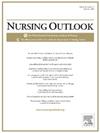新毕业护士能力-第一部分:马里兰州学术教师和急症护理医院实践领导者的看法
IF 3.7
2区 医学
Q1 NURSING
引用次数: 0
摘要
背景了解新毕业护士(ngn)的实践准备对护理学术教师和医院实践领导者都非常重要。实践领导者在开始他们的专业实践时,对ngn的现实核心能力有了清晰的认识,有助于这些ngn的持续增长和发展。目的本研究的目的是了解护理学术教师和实践领导者在护理专业实践开始时对ngn的实践准备和能力的看法。研究人员旨在确定护士在完成执照前护理课程后的核心能力,无论其类型如何。方法采用109项问卷调查和虚拟焦点小组,以护理学术教师和医院护理实践领导为目的样本,对全州护理实践-学术和混合方法进行研究。研究确定了一组7个核心能力,使用85%的共识阈值,另外11个核心能力,使用75%的阈值,作为护士学术教师和医院实践领导者在开始其专业实践角色时对ngn的现实期望。结论护理学术教师和医院实践领导对护理护士的实践准备和能力认知存在差异。这项研究证实了学术与实践之间的持续差距,并为解决这一差距提供了更明确的方向。它还支持以能力为基础的教育现象作为一个连续体发生,从护理学生开始,继续到新执业护士(ngn),最终成为合格的专业护士。本文章由计算机程序翻译,如有差异,请以英文原文为准。
New graduate nurse competencies—Part I: Perceptions of academic faculty and acute care hospital practice leaders in the State of Maryland
Background
Understanding practice readiness of newly graduated nurses (NGNs) is of great importance for both nursing academic faculty and hospital-based practice leaders. Gaining clarity of the realistic core competencies practice leaders can expect of NGNs upon starting their professional practice facilitates ongoing growth and development of these NGNs.
Purpose
The purpose of this study was to understand the perceptions of nursing academic faculty and practice leaders of NGNs’ readiness for practice and competency at the start of their professional nursing practice. The researchers intended to identify the core competencies of NGNs upon completion of their prelicensure nursing program regardless of type.
Methods
A statewide nursing practice–academic and mixed-method research study, employing a survey of 109 items and virtual focus groups, and using a purposive sample of nursing academic faculty and hospital-based practice leaders.
Discussion
The study identified a set of 7 core competencies using an 85% agreement threshold and an additional 11 core competencies using a 75% threshold by both nursing academic faculty and hospital-based practice leaders as realistic expectations of NGNs at the time of starting their professional practice roles.
Conclusion
Nursing academic faculty and hospital-based practice leaders had different perceptions of NGNs’ readiness for practice and competency. This study confirmed the continued academic-practice gap and provided a clearer direction forward to address this gap. It also supported the phenomenon of competency-based education to occur as a continuum that starts with nursing students and continues into new-to-practice nurses (NGNs) and ultimately competent professional nurses.
求助全文
通过发布文献求助,成功后即可免费获取论文全文。
去求助
来源期刊

Nursing Outlook
医学-护理
CiteScore
6.20
自引率
7.00%
发文量
109
审稿时长
25 days
期刊介绍:
Nursing Outlook, a bimonthly journal, provides innovative ideas for nursing leaders through peer-reviewed articles and timely reports. Each issue examines current issues and trends in nursing practice, education, and research, offering progressive solutions to the challenges facing the profession. Nursing Outlook is the official journal of the American Academy of Nursing and the Council for the Advancement of Nursing Science and supports their mission to serve the public and the nursing profession by advancing health policy and practice through the generation, synthesis, and dissemination of nursing knowledge. The journal is included in MEDLINE, CINAHL and the Journal Citation Reports published by Clarivate Analytics.
 求助内容:
求助内容: 应助结果提醒方式:
应助结果提醒方式:


